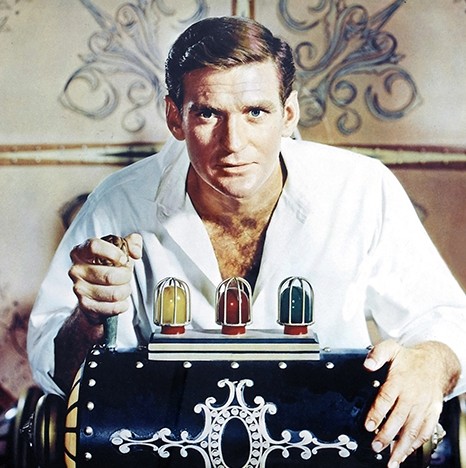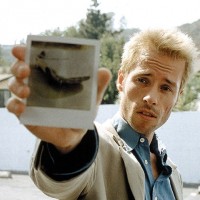
By Jennifer DeMeritt
As part of the Rubin’s yearlong exploration of the future, the films in this season of Cabaret Cinema delve into the nature of time. Some focus on time travel, like Back to the Future and Time Machine. Others feature subtler, more mind-bending takes on time. In addition to their pure entertainment value they have much to teach us about how we live in the here and now, especially if we consider their connections to Buddhist ideas about time.
“Buddhism illuminates that your experience of time changes relative to your emotional state,” says Tim McHenry, the Rubin’s director of programming. “We obsess about the past and the future because we cling to emotional experiences as if they were static or permanent. If we were to recognize that these things are fluid and subject to change, we would be released from the sense of time as linear and the one track from here to there.”
Spoilers follow.
The Eternal Present in Groundhog Day

Director Harold Ramis has been influenced by Buddhist philosophy throughout his life, so it’s no surprise that Groundhog Day is a metaphor for reincarnation. Bill Murray plays Phil Connors, a sleazy, egotistical weatherman forced to relive the same dismal day, again and again, until he learns to quit being a selfish lout and approach other people with compassion.
There is a clear parallel to the Buddhist concept of samsara, the cycle of delusion, rebirth, and repetition until enlightenment is achieved. But Phil’s plight can also teach us about committing to the present.
Phil’s feelings about the day he’s forced to repeat gradually transform from misery to tolerance to joy. Phil sparks this transformation by investing fully in the moment. Instead of resisting his present reality—i.e., the small town where he’s stuck in a snowstorm—he seeks satisfaction there, without any hope that he’ll escape from it. Giving up expectations about the future is what allows him to find fulfillment in the present. This is key to living mindfully.
Hidden Teachings in Memento

In the psychological thriller Memento, Lenny Shelby (Guy Pearce) can’t form new long-term memories due to a head injury. He remembers his past but forgets what happened five minutes ago, so he creates continuity through a system of mementos: writing notes to himself, taking photographs, even tattooing important information on his body.
Viewers of our exhibition The Second Buddha: Master of Time might see a parallel between Lenny’s mementos and the terma, or treasure teachings, that Buddhist master Padmasambhava hid so they could be rediscovered centuries later. They both function as time capsules, projecting knowledge from the present to the future. But can Lenny interpret this knowledge correctly? Unfortunately Lenny is not only being deceived by other people about his present, but he has deluded himself about “truths” from his past. This connects to another Buddhist idea: that the self, which we believe to be constant, is actually fleeting and illusory.
Alternate Futures in Donnie Darko

In the cult classic Donnie Darko, Jake Gyllenhaal portrays a teenager who is beckoned toward an alternative future by a menacing talking rabbit named Frank. As the story unfolds, Donnie experiences a psychic premonition (or is it psychosis?), first love, and an episode of destruction too horrifying to live with. The movie ends with Donnie passing through a wormhole in time, back to the moment when his possible futures diverged, where he makes a fateful choice.
The notion of alternative paths through time speaks to the Buddhist idea of the present moment as a place of limitless possibility where the future is born—indeed, where many possible futures can be born, depending on the action one takes.
The Rubin’s exhibition A Lost Future also explores this idea by presenting reimagined histories and speculative futures that invite us to ask: What if? As you watch these movies and peruse our galleries, we hope you’ll discover your own connections.
Brainwave is supported in part by public funds from the New York City Department of Cultural Affairs in partnership with the City Council.
Support for The Second Buddha: Master of Time is made possible in part by Bob and Lois Baylis, The Ellen Bayard Weedon Foundation, E. Rhodes and Leona B. Carpenter Foundation, Barbara Bowman, Lisina M. Hoch, and contributors to the 2018 Exhibitions Fund.
A Lost Future: Shezad Dawood/The Otolith Group/Matti Braun is supported by Rasika and Girish Reddy, and by public funds from the New York City Department of Cultural Affairs in partnership with the City Council. Additional support has been provided by Amita and Purnendu Chatterjee, and contributors to the 2018 Exhibitions Fund.

Add Your Thoughts
Comments are moderated, and will not appear on this site until the Rubin has approved them.



